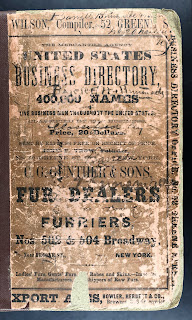Last night I discovered the names of a few of my 4th and 5th great grandparents in Italy. And I plan to gather many more.
I've written before about using the online Italian Genealogy Archives known as Antenati (see How to Use the Online Italian Genealogy Archives). And I've told you how I used that site to gain two generation in one day.
Because I had so much good fortune with my family tree last night, I want to share a few tips and methods with you.
 |
| In a few steps I found my 5th great grandfather, Innocenzo Cerrone. |
First, start with the youngest ancestor you would like to find in the archives, like your grandfather. If you don't already know the names of his parents, you will find them on his birth record, along with their ages.
Next:
 |
| Consenting to marriage by making a mark. |
- Search the surrounding years for the birth of his siblings. You'll know you've found them if the parents' names match and their ages are a reasonable match. I say that because in the old days you might not know exactly how old you were. (I have to do the math to figure out my husband's age every time someone asks!)
Note: An Italian woman in the 1800s might bear children for 20 years straight! My own grandfather was 20 years older than this sister. - When you think you've found the firstborn child in a family (because the parents are so young), go back one year and search for the parents' marriage. (See How to Read Italian Marriage Records.)
Example: When I found the 1841 birth record for a sister of my great great grandmother, and the new mother was only 20 years old, I searched the 1840 marriage records and found their wedding documents. - Use the marriage documents (see The Italian Genealogy Goldmine: "Wedding Packets") to identify the names of your great grandparents' parents. Marriages required the consent of one's parents, so their names are listed.
Note: Sometimes to distinguish between people with the same name, a person's father's name is included. If the name is listed as Giovanni di Giuseppe, Giovanni's father Giuseppe is still alive. If it's listed at Giovanni fu Giuseppe, Giovanni's father Giuseppe has died. Now you have another great grandfather and a date by which he died. - Look through the marriage records in the Matrimoni, processetti (Weddings, processions) section. If the bride or groom's father has died, that death record is included. This provides yet another set of great grandparents' names. If the bride or groom's grandfather has also died, you will see his death record. Now you have the names of the great grandparents of the bride or groom—who may already be your great great grandparents!
- Keep in mind these other facts as you go back in time:
- My extensive research of a few rural Italian towns in the 1800s shows that the average age of marriage was 25. You will see some younger and some older, but this has been the average. If one spouse is a lot older than that, it's probably not their first marriage.
- When a child died, it was extremely common to use the same name, or a slight variation of the name, on the next child born. In my search last night, I found an Anna Cerrone born to my 4th great grandparents. I wasn't sure she was my 3rd great grandmother. I had seen my 3rd great grandmother listed as Anna Donata or Donata, and this baby was simply Anna. So I kept searching. Sure enough, baby Anna had died, and they name the next baby girl Anna Donata Cerrone. So don't go chasing the wrong sibling.
- There was no divorce in Italy until 1970, but you will find lots of remarriages. If someone became a widow, they did not stay that way for long. They would remarry and continue bearing children as long as possible. I have seen a few people from this era who were married four times. Today that has a whole different connotation!
- You will find some human error on these documents. I have seen the wrong birth certificate included in wedding documents. It doesn't happen often, but when siblings have the same exact name, mistakes can happen!
So this Father's Day, I invite you to find the names of a few new-to-you Nth great grandfathers. Celebrate their names and be grateful to them. Without any single one of them, you would not be here.






